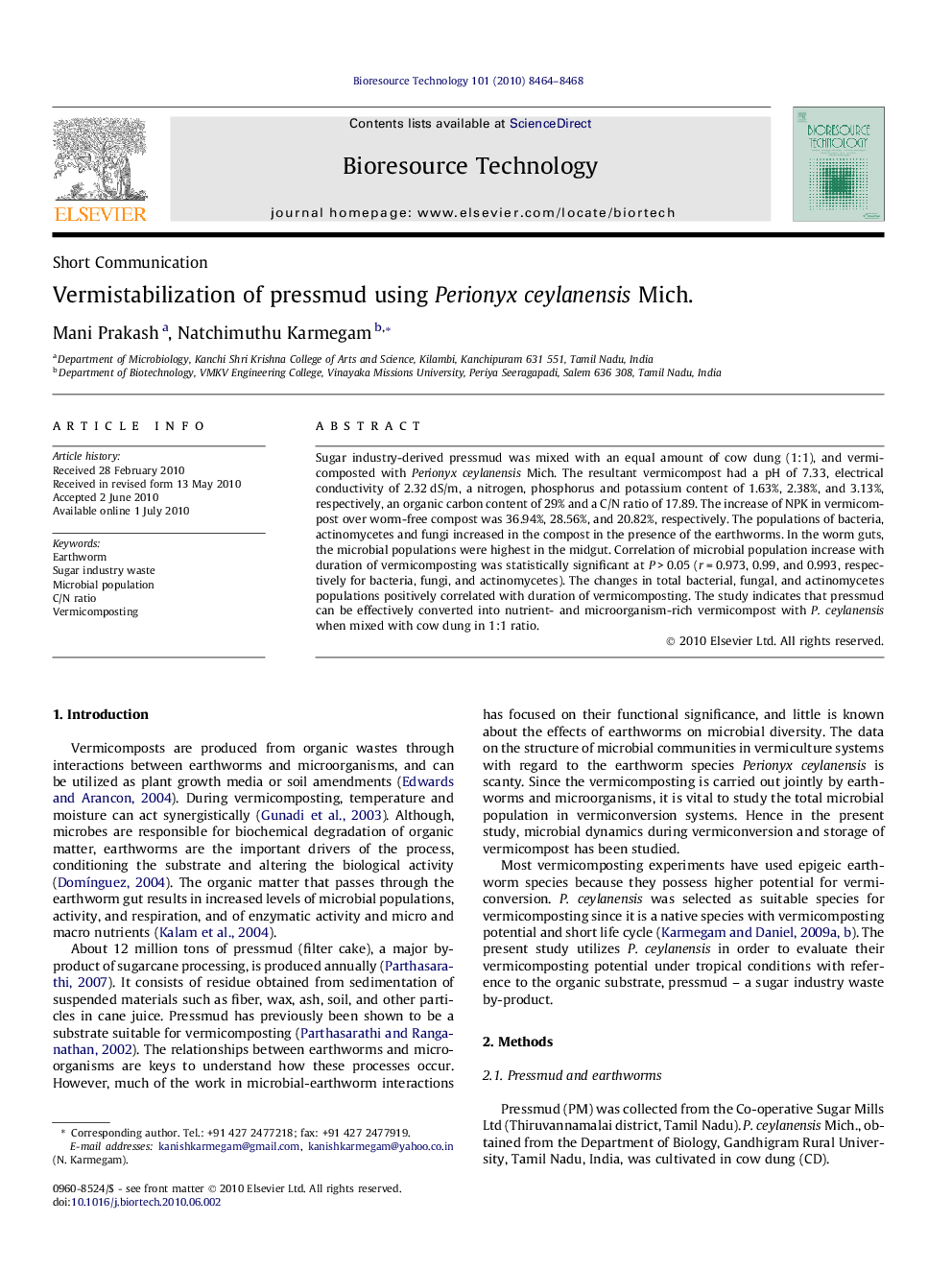| Article ID | Journal | Published Year | Pages | File Type |
|---|---|---|---|---|
| 682193 | Bioresource Technology | 2010 | 5 Pages |
Sugar industry-derived pressmud was mixed with an equal amount of cow dung (1:1), and vermicomposted with Perionyx ceylanensis Mich. The resultant vermicompost had a pH of 7.33, electrical conductivity of 2.32 dS/m, a nitrogen, phosphorus and potassium content of 1.63%, 2.38%, and 3.13%, respectively, an organic carbon content of 29% and a C/N ratio of 17.89. The increase of NPK in vermicompost over worm-free compost was 36.94%, 28.56%, and 20.82%, respectively. The populations of bacteria, actinomycetes and fungi increased in the compost in the presence of the earthworms. In the worm guts, the microbial populations were highest in the midgut. Correlation of microbial population increase with duration of vermicomposting was statistically significant at P > 0.05 (r = 0.973, 0.99, and 0.993, respectively for bacteria, fungi, and actinomycetes). The changes in total bacterial, fungal, and actinomycetes populations positively correlated with duration of vermicomposting. The study indicates that pressmud can be effectively converted into nutrient- and microorganism-rich vermicompost with P. ceylanensis when mixed with cow dung in 1:1 ratio.
